- Home
- James Rollins
The Demon Crown: A Sigma Force Novel Page 33
The Demon Crown: A Sigma Force Novel Read online
Page 33
At last their party reached the source, stepping out onto a wide balcony that overlooked a cavernous three-story space.
“The crown jewel of the Wieliczka mine,” Clara announced. “The Chapel of St. Kinga.”
Elena gaped at the wondrous site. It was more a cathedral than a mere chapel. Massive chandeliers, glowing with crystals of rock salt, hung from a vaulted roof. At the far end, a giant crucifix loomed over a stone altar, all sculpted of salt. Illuminated niches along the walls to either side shone with great masterworks from generations of miners. There were biblical scenes of Mary and Joseph arriving in Bethlehem, a nativity crèche lit by a tiny salt-carved baby Jesus. Even the walls and floors had been cut and polished to look like bricks and octagonal tiles.
The majority of the parishioners still milled below, easily numbering two hundred—though the room looked like it could hold twice that. A few people trailed up the two sweeping stone staircases on their long journey back to the surface.
For the moment, Elena didn’t even envy their leaving. She let go of Sam’s hand and wandered up to the balustrade to better view this crystalline cathedral, a Sistine Chapel made of salt.
“The chamber is named after St. Kinga,” Clara explained. “Legend has it that Lady Kinga, a Hungarian princess, was betrothed by her father to the Prince of Krakow. Before leaving Hungary, she cast her engagement ring into a salt mine in her home country. Then upon arriving in Krakow she ordered a group of miners to dig. In that new excavation, the workers discovered a large lump of salt—and inside it was Lady Kinga’s ring. Since that time, she has become the patron saint of miners.”
“She should’ve just filed an insurance claim for the lost ring,” Monk whispered. “Would’ve saved a lot of backbreaking labor.”
Clara scolded him with a deep frown.
Clearly one didn’t disparage a saint—especially in her own domain.
A bit miffed, Clara led them away from the balcony and back into the tunnels heading deeper into the mine. As they descended through a labyrinth of caves, tunnels, and sculpted rooms, they began to reach chambers flooded with emerald-green pools. Wooden catwalks bridged the still waters, reflecting their scatter of lights. Along the bottom, a layer of coins shone like some lost dragon’s horde, left behind by centuries of visitors casting prayers and wishes into those depths.
“Have we already reached the water table?” Kat asked. “Is that why they’re flooded?”
“No, these small pools were formed from ages of rainwater seeping down here. The much larger lakes lie twice as far down from where we are now.”
Elena groaned. She meant to do so softly, but the acoustics of salt and water amplified her complaint. Sam found her hand again. She did not object.
Clara led them through the last of the tourist route until she reached a long traverse that inclined steeply down. The passageway ahead had no strings of lights or gently glowing salt statues, only a stygian darkness that seemed to go on forever.
“We’ll need our own lamps from here,” Clara said, switching on her helmet light.
They all followed her example. As backup, they also carried flashlights. With her free hand, Elena clutched hers in an iron grip.
As Clara led the way, Monk leaned to Kat and quoted from Dante’s Inferno, reciting the words said to be inscribed at the entrance to hell.
“Abandon all hope, ye who enter here.”
3:42 A.M.
Kat stood at the bank of a wide lake. The scatter of their helmet lamps cast spears of light over the dark water. The beams reflected off its mirror-flat surface and flickered across the low vault of rough stone above. The air here was damp with the seaside scent of saltwater.
The lake stretched so far that she could not make out the far bank.
Its sheer breadth boggled.
Clara shared an anecdote to put the size in perspective. “We entertained windsurfers on this lake a few years back. It was amazing to see their sails sweeping across the dark cavern.”
“Propelled by what wind?” Monk asked. He held up a finger as if searching for that breeze.
Clara smiled. “They brought in big fans powered by generators.”
“In other words, they cheated,” Monk grumbled.
“We sometimes have to improvise to accommodate guests,” Clara corrected. “Like tonight.”
She waved to where her three brothers stood along the bank beside a small Zodiac pontoon boat and a Sea-Doo Jet Ski. Dressed in waterproof gear, the trio—all as blond as their sister and as muscular as wrestlers—had collected the watercraft from elsewhere in the flooded levels of the mine and ridden them here to meet up with Kat’s group. Evidently these lower levels had become series of pools, lakes, and twisting canals, all interconnecting to form a watery labyrinth.
“My brothers have also brought along some excavating tools in case you should discover this lost amber deposit and desire to collect a sample for your museum’s collection.”
Clara nodded respectfully to Elena Delgado.
Kat checked her watch, all too mindful of the passing of time. “Then we should be going.”
It had taken them more than ninety minutes to traverse the lower half of the mine after leaving the tourist route. The paths through these levels were less maintained, frosted with rills of salt. They had to climb down rickety stairs, even a series of ladders that were white with encrusted rime.
Everything looked strangely intact, preserved over the decades, if not centuries, due to the high sodium atmosphere.
Along the way, they also found further evidence of the miners’ artistic bent: a tiny niche shielding the figure of a Madonna with child, a handful of biblical quotes inscribed into the walls. And they crossed the path of many standing figures whose features were blurred by ancient runnels of white salt. They stood like ghostly sentinels along their route, as if warning them back.
Kat was happy to climb into the pontoon boat for this final leg of their journey. According to Dr. Slaski, the Chapel of the Seashell lay on the far side of this lake.
Clara’s brother Piotr untethered the boat and then hopped in the stern. Another brother, Anton, manned the Zodiac’s engine and yanked it to life. Gerik, the last sibling, waded to the Jet Ski, mounted it, and added its engine to the chorus of rumbling.
The noise reverberated off the low ceiling, strong enough to be felt in Kat’s rib cage.
Once ready, the group set off across the lake, led by a swivel-mounted lamp at the bow end of the pontoon. Piotr took up position there, watching from the front for any obstructions hidden beneath the surface.
Slaski interrupted the vague tension by turning to Sam. “Back at the museum, you asked why the miners should dig out such a unique structure as the Seashell Chapel. Perhaps now you understand after all you’ve seen. After spending their lifetimes down here, they sought to leave some trace of themselves behind, a legacy for those who would follow.”
Clara concurred. “Besides the sculptures and decorations, you’ll find other chambers of the mine that were transformed through their labor into pieces of art.”
“Like back at the Chapel of Saint Kinga,” Elena said.
“That’s correct.”
The conversation died down again, as if squashed to silence by the weight of the roof. It also didn’t help that the stone ceiling slowly lowered upon them as they crossed. By the time the boat’s lamp pierced the darkness to reveal the far shore, Kat could have reached up and brushed her fingertips along the salty ceiling.
Everyone instinctively hunkered down.
At first, it appeared this side of the lake ended at a solid wall, but then Piotr guided the boat to the left, revealing a channel exiting the lake and curving out of sight. They were soon off the main lake and idling slowly along the narrower canal. It made an S-shaped path, which ended at a smooth slope of rock.
The bow of the pontoon bumped into it and rode slightly up onto that stone beach.
The slope rose up into a large cavern, though it was on
ly a quarter of the size of the cathedral to Saint Kinga.
Slaski stood and pointed ahead. “The entrance to Kaplica Muszli.”
Kat pictured the map that the museum director had shown them and imagined this cavern must be the pelvis of the scallop shell. Even from here, she could see the dark outlines of passages exiting one side of the cavern, radiating out to form the veins of the shell.
Relieved to have safely reached here, Kat got everyone moving. They clambered out of the boat and scaled the slope into the cavern. Upon seeing the condition of this section of the mine, Kat’s relief quickly faded.
Their lights revealed half the tunnels were filled with rubble from old collapses. Even in the intact passageways, water dripped and leaked from cracks and fissures in the ceiling.
Kat pictured rainwater seeping all the way down here. The dissolved salts had hardened into crusts, caking everything into a snow-white landscape. Frozen sheets of rime covered the walls. Long, fragile-looking crystal icicles hung from the roofs of the tunnels.
She despaired of ever finding the source of Smithson’s artifact. For all anyone knew, it was already buried under tons of rock from the old cave-ins.
“We have to go look,” Monk reminded her, reading her as he always did.
She nodded and clicked on her flashlight, adding its light to her helmet’s shine. Others followed suit.
Sam frowned at the number of tunnels. “I guess from here it’s a matter of eeny, meeny, miny, or moe.”
“Maybe we should split up,” Monk said. “We can cover more ground.”
Elena scowled. “When is that ever a sound plan?”
“She’s right,” Kat said. “For now, we stick together. We don’t have time to waste hunting down anyone who gets lost.”
With the matter settled, Kat set off down the far right tunnel, planning to proceed systemically through this maze. Anton and Gerik stayed behind with a radio, ready to ferry any tools they might need from the boat.
The group forged down the dark passageway. It was wide enough for two people to walk abreast. Still, they had to often break through blockades of salt stalactites to pass. All the while, streams of water ran underfoot, trailing a slow path toward the flooded labyrinth behind them.
Kat searched all around, sweeping both her flashlight and helmet lamp across the walls and ceilings, looking for any clue that Smithson had been here.
While she failed to find anything, she had at least chosen wisely. Though it took them nearly a half hour, they reached the end of the passageway. It had easily been a quarter-mile long. She remembered Slaski’s description of the size of the Seashell Chapel.
A full square kilometer.
They still had a lot of ground to cover.
The tunnel ended at a thin cavernous arcade that swept across what would be the large rim of the scallop. It was here where all the radiating passageways ended. The cavern’s roof sloped from overhead and slanted to the floor, forming the sharp edge of the shell.
Kat started to turn toward the next tunnel, ready to circle back to where they started, intending to crisscross back and forth until she had covered as much of this “shell” as humanly possible.
“Look at this,” Elena said.
The librarian was down on one knee, pointing her flashlight up toward the low roof as it slanted to the floor. Like in the tunnels, salt had formed a blockade of stalactites, spikes, and pillars that barred off the back half of the long cavern. It looked like a frost-coated prison gate that ran the length of the arcade.
Kat and the others joined Elena.
Her beam splashed across the low roof. The light revealed a riotous bas-relief carved into the salt. Kat added her light, as did the others as they spread out along the barrier.
Though rimed in salt and crumbled in places, the surface appeared to depict a great battle. Winged angels flew across the upper half, wielding spears and bows. Below, twisted demons tried to scrabble out of the underworld, with gnashing teeth and clawing limbs. The Gothic grotesqueness of the motif reminded Kat of a Hieronymus Bosch painting, but one sculpted out of salt.
“Did you know this was here?” Kat asked, not taking her eyes from the sight.
Slaski moaned, “No . . .”
Clara was less firm. “I had heard rumors of some hellish artwork in the deep mine, but few travel this far. Due to the flooding and the risk of cave-ins, I doubt anyone has been to this section in years, and considering all the salt we had to break through to get over to this side . . .” She shook her head. “I doubt anyone’s set foot back here in decades, if not longer.”
Kat straightened and pointed her flashlight along the curving cavern. It had to stretch a half mile. She knew they had no choice.
“We’ll need to search its entire length.”
No one argued, sensing the magnitude of the discovery.
“Keep an eye out for anything that might be significant or out of the ordinary.”
Sam grimaced as he stared down the length of the macabre decoration. “Like any of this is ordinary.”
They set off single file, with Clara leading. Their flashlight beams bobbed and played across the Gothic masterpiece, adding additional shadow and substance to the battlefield.
Seven pairs of eyes scanned for every detail.
Kat noted the anomaly first, almost skipping past it. She backstepped into Monk to fix her light there.
He spotted it then, too, and whispered to her, “We’ve seen this little bugger before, haven’t we?”
Everyone joined them, adding their lights.
It was hidden among the angels, just another winged figure, hovering above the demon horde.
Kat recognized the symbol—as it had also graced Smithson’s tomb.
It was a winged insect, maybe a moth, but she knew better.
It was a wasp.
“We need to get a closer look,” she said.
In short order, the group smashed through the salt icicles and columns to reach the symbol. Like much of the sprawling artwork, it was crusted with a rime of salt, smudging its details.
Kat reached for her water bottle, intending to try to dissolve and wash away the salt.
Piotr pushed next to her and held out a thermos. “Gorąca herbata.”
None of the brothers spoke English, so Clara translated. “He says to try his hot tea. It should work better than cold water to remove the salt.”
Good idea.
She soaked a handkerchief with the steaming tea and did her best to splash more over the image. To give time for the salt to dissolve, she draped and pressed her sodden cloth over the winged figure.
She turned to Monk as she waited. “Hopefully there’s something under the salt, maybe a message left here by Smithson. If we could only—”
Still pressing against the symbol, she felt it shift as its salty crust gave way. The bas-relief of the wasp sank into the stone. A sharp crack followed as something far larger released behind the wall.
She stumbled back, dropping the cloth and pushing everyone away.
Before her, the entire section of the roof broke loose. It swung down, crushing the stalactites under it. As it opened, the sound of rushing water echoed out, accompanied by the groaning of mighty gears.
She pictured the giant waterwheel she had seen earlier, turning far above.
Apparently it wasn’t the only one still operational.
As the roof’s edge lowered and touched the floor, it formed a ramp going up.
She peered into the beckoning darkness.
Monk turned to her. “Now look what you did.”
33
May 9, 11:58 A.M. JST
Fujikawaguchiko, Japan
“Two minutes to go,” Gray warned the others.
He sat astride a Yamaha PES2 motorcycle, powered by an electric motor. Like him, the other four members of the strike team wore smart helmets outfitted with radios. The group was hidden in the woods behind the research campus of Fenikkusu Laboratories.
From the
perch of his seat, Gray focused on their target rising from the center of those fenced-off grounds: a glass-and-steel pagoda known locally as Kōri no Shiro, or the Ice Castle.
Though it was midday, the sky was dark. A thunderstorm had rolled down the slopes of Mount Fuji, hammering its flanks with hail. Lightning crackled overhead, reflecting off the Ice Castle.
The storm should serve them well, offering cover for the mission to come. Inside Gray’s helmet, he received visual feed from the main assault force as it raced down the main road and headed toward the campus’s front gates.
“One minute,” he radioed to his group.
Aiko crouched over her cycle to one side, Palu on the other. Aiko had also brought along two other men—Hoga and Endo—to fill out the small team. Both had been handpicked from her personal task force at the newly formed Japanese intelligence unit. Under their helmets, Aiko and her men wore black face masks, showing only their eyes, like a trio of modern-day ninjas. Gray didn’t even know what the two men looked like, only that they were lithe, muscular, and heavily armed.
As Gray counted down the final seconds, his heart pounded in his ears; he was anxious to get moving. Their group had lost valuable time getting here. After surviving the barrage of depth charges, they had radioed for help. Helicopters were immediately dispatched from Midway Atoll to their location in the middle of the Pacific’s garbage patch. Once safely on Midway, Kowalski and Palu’s cousins had been transported to a small hospital to undergo emergency treatment. Tua’s condition remained critical.
Unable to wait, Gray and the others had immediately taken off in a private jet, redlining its engines to cross the remainder of the Pacific to reach Japan. While en route, Aiko had coordinated this assault, alerting authorities in her unit of the involvement of Fenikkusu Laboratories in the attack on Hawaii, pinpointing this research building as the likeliest target due to Takashi Ito’s presence here and the secretive nature of the facility. She had kept this knowledge limited to only a handful, fearing word might reach the enemy. Aiko had expressed concern that Fenikkusu Laboratories might have bribed or blackmailed a few members of the newly formed agency, taking advantage of this transitional period as the country’s various intelligence services were reorganized.

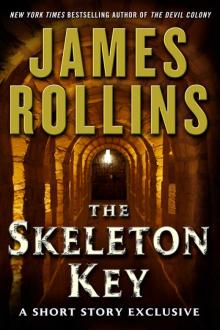 The Skeleton Key
The Skeleton Key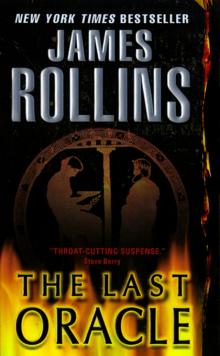 The Last Oracle
The Last Oracle The Judas Strain
The Judas Strain Black Order
Black Order Sandstorm
Sandstorm Ghost Ship
Ghost Ship The Devil Colony
The Devil Colony Subterranean
Subterranean The Doomsday Key
The Doomsday Key The 6th Extinction
The 6th Extinction Bloodline
Bloodline Jake Ransom and the Howling Sphinx
Jake Ransom and the Howling Sphinx The Midnight Watch
The Midnight Watch Map of Bones
Map of Bones The Demon Crown
The Demon Crown Deep Fathom
Deep Fathom Sigma Guide
Sigma Guide Kowalski's in Love
Kowalski's in Love Jake Ransom and the Skull King's Shadow
Jake Ransom and the Skull King's Shadow Excavation
Excavation The Seventh Plague
The Seventh Plague Altar of Eden
Altar of Eden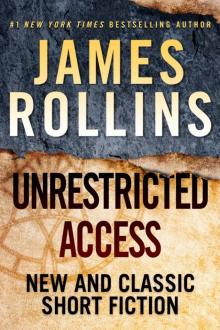 Unrestricted Access: New and Classic Short Fiction
Unrestricted Access: New and Classic Short Fiction Indiana Jones and the Kingdom of the Crystal Skull
Indiana Jones and the Kingdom of the Crystal Skull Crucible
Crucible The Eye of God
The Eye of God The Bone Labyrinth
The Bone Labyrinth The Last Odyssey: A Thriller
The Last Odyssey: A Thriller Unrestricted Access
Unrestricted Access Amazonia
Amazonia Blood Brothers: A Short Story Exclusive
Blood Brothers: A Short Story Exclusive Map of Bones: A Sigma Force Novel
Map of Bones: A Sigma Force Novel The Skeleton Key (sigma force)
The Skeleton Key (sigma force)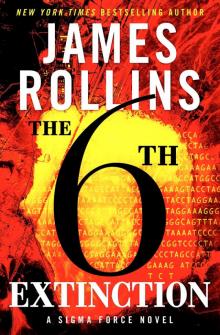 Sigma Force 10 - The Sixth Extinction
Sigma Force 10 - The Sixth Extinction Innocent Blood
Innocent Blood Map of Bones sf-2
Map of Bones sf-2 The Eye of God: A Sigma Force Novel
The Eye of God: A Sigma Force Novel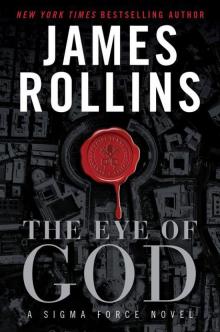 The Eye of God: A Sigma Force Novel sf-9
The Eye of God: A Sigma Force Novel sf-9 The Pit
The Pit Indiana Jones and the The Kingdom Of The Crystal Skull
Indiana Jones and the The Kingdom Of The Crystal Skull The Last Oracle (2008) sf-5
The Last Oracle (2008) sf-5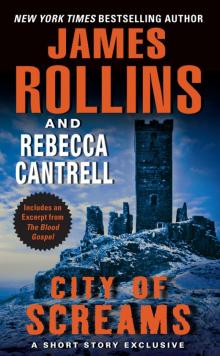 City of Screams
City of Screams The Doomsday Key and The Last Oracle with Bonus Excerpts
The Doomsday Key and The Last Oracle with Bonus Excerpts The Judas Strain sf-4
The Judas Strain sf-4 Blood Infernal
Blood Infernal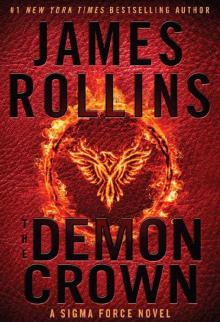 The Demon Crown: A Sigma Force Novel
The Demon Crown: A Sigma Force Novel War Hawk: A Tucker Wayne Novel
War Hawk: A Tucker Wayne Novel SANDSTORM sf-1
SANDSTORM sf-1 Bloodline: A Sigma Force Novel
Bloodline: A Sigma Force Novel Amazonia: a novel
Amazonia: a novel The Last Oracle: A Sigma Force Novel
The Last Oracle: A Sigma Force Novel City of Screams (the order of the sanguines)
City of Screams (the order of the sanguines)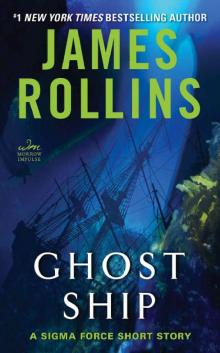 Ghost Ship: A Sigma Force Short Story
Ghost Ship: A Sigma Force Short Story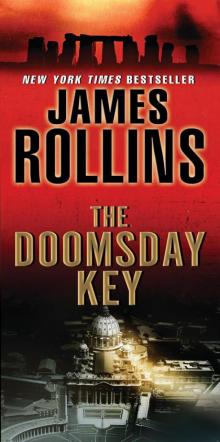 The Doomsday Key: A Sigma Force Novel
The Doomsday Key: A Sigma Force Novel